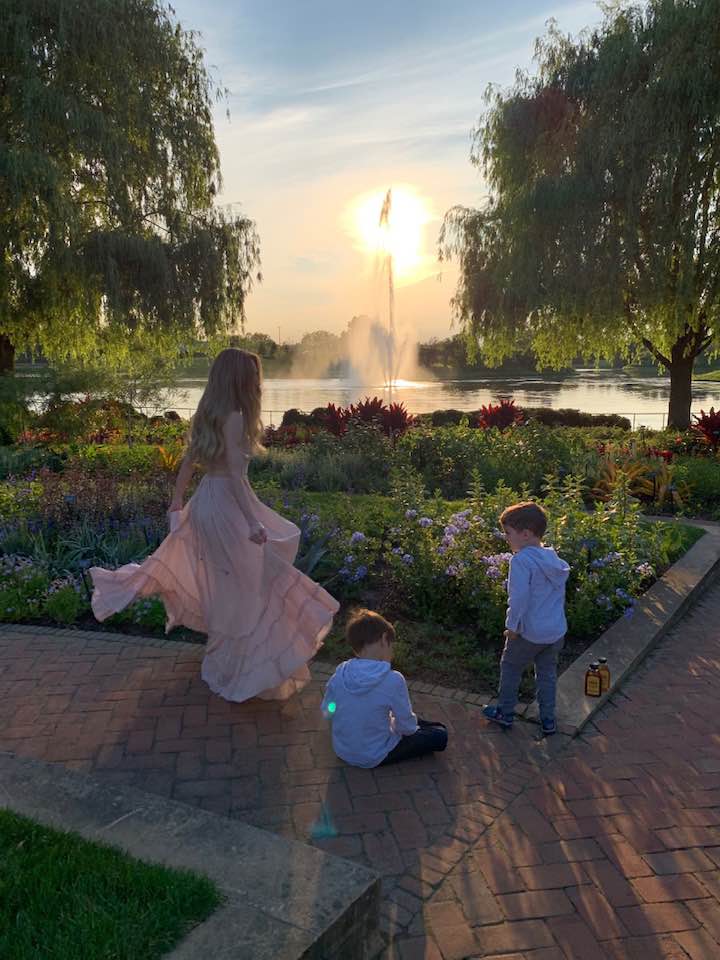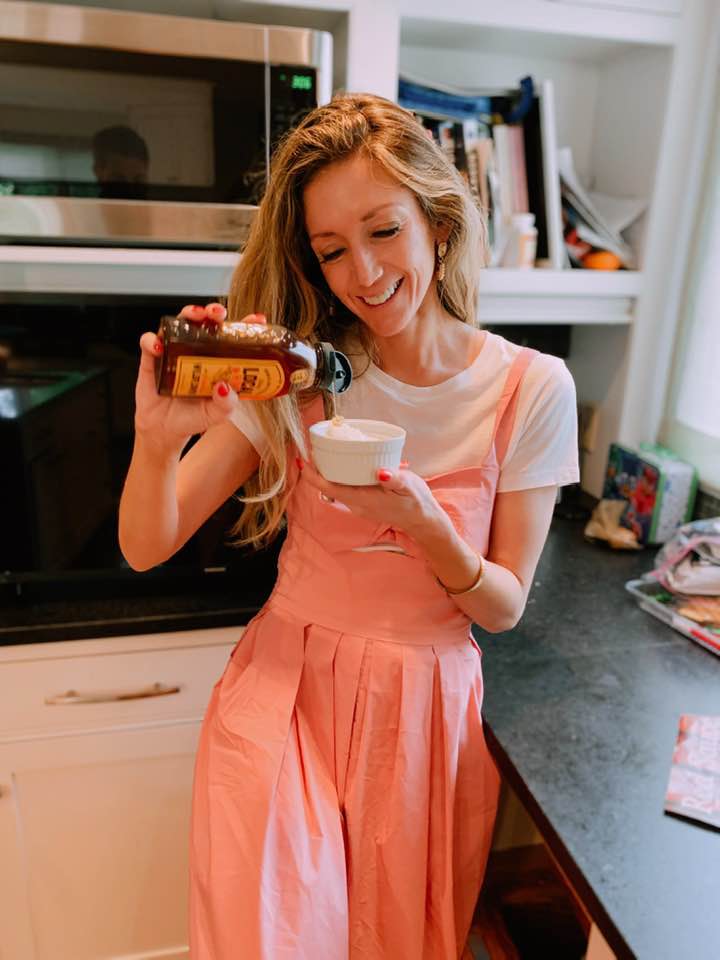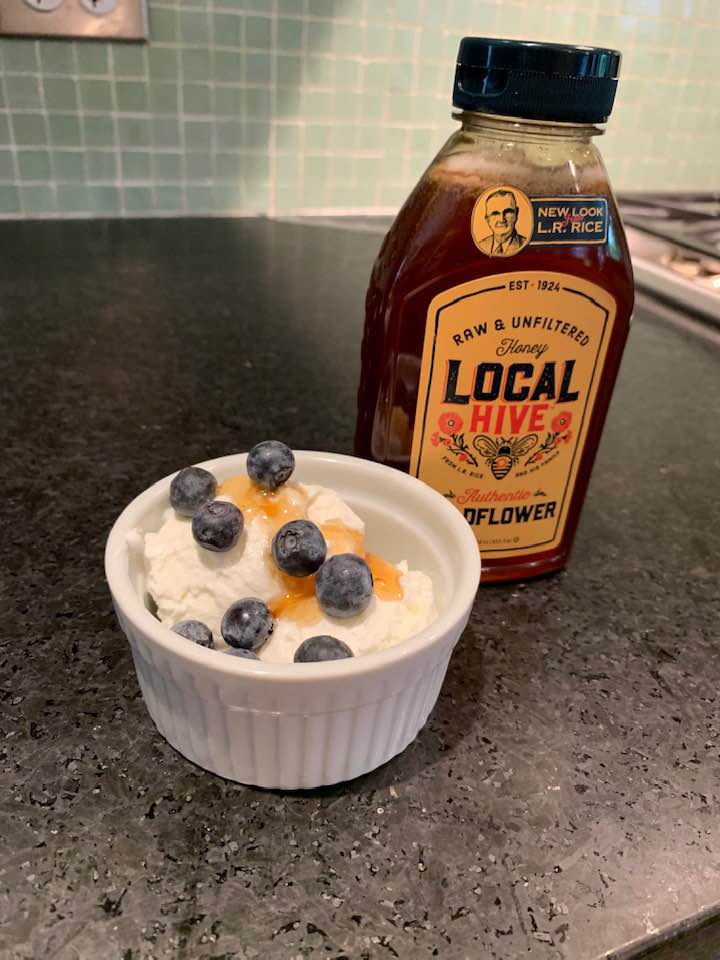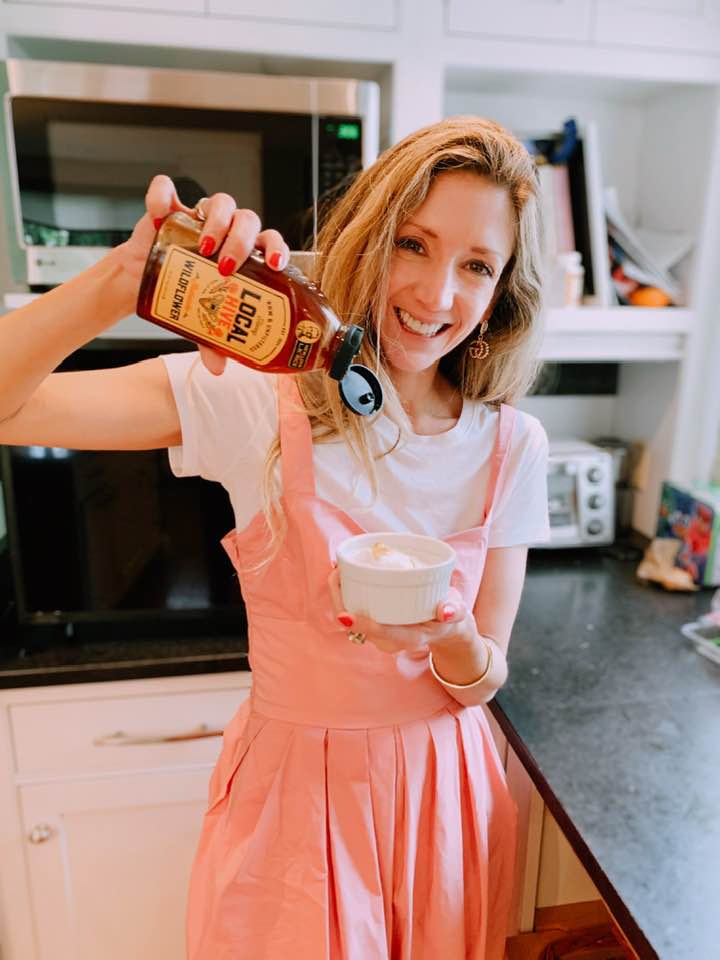
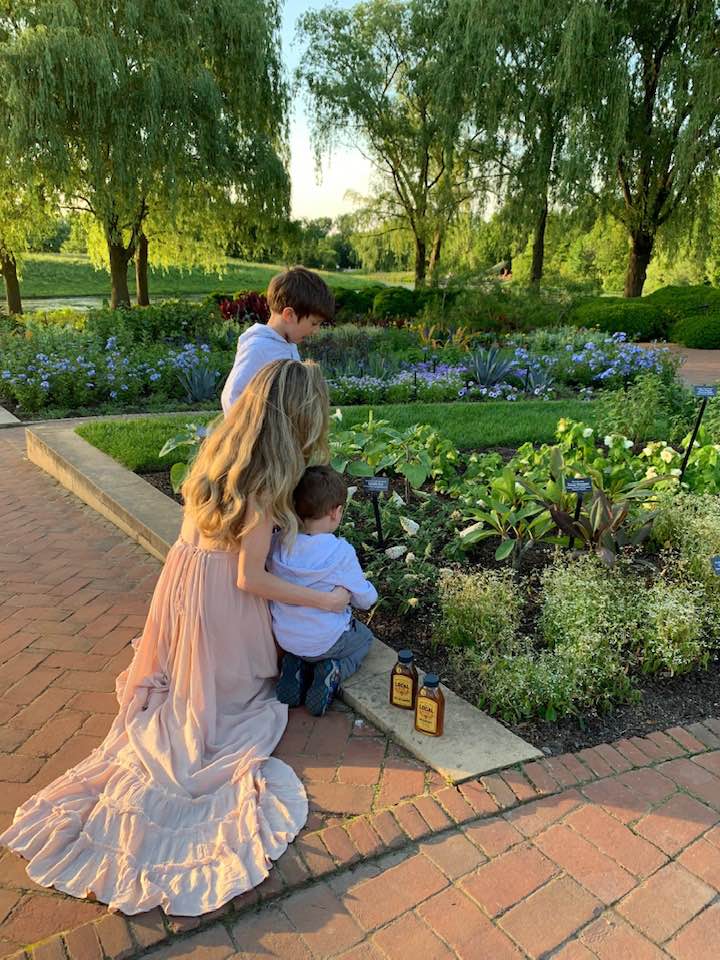
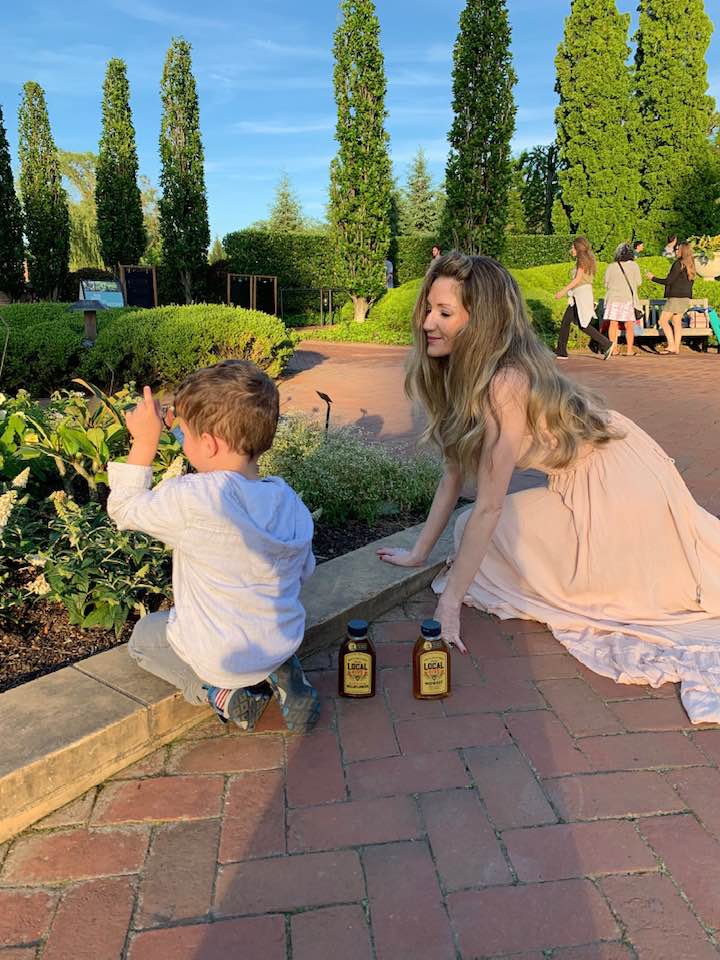
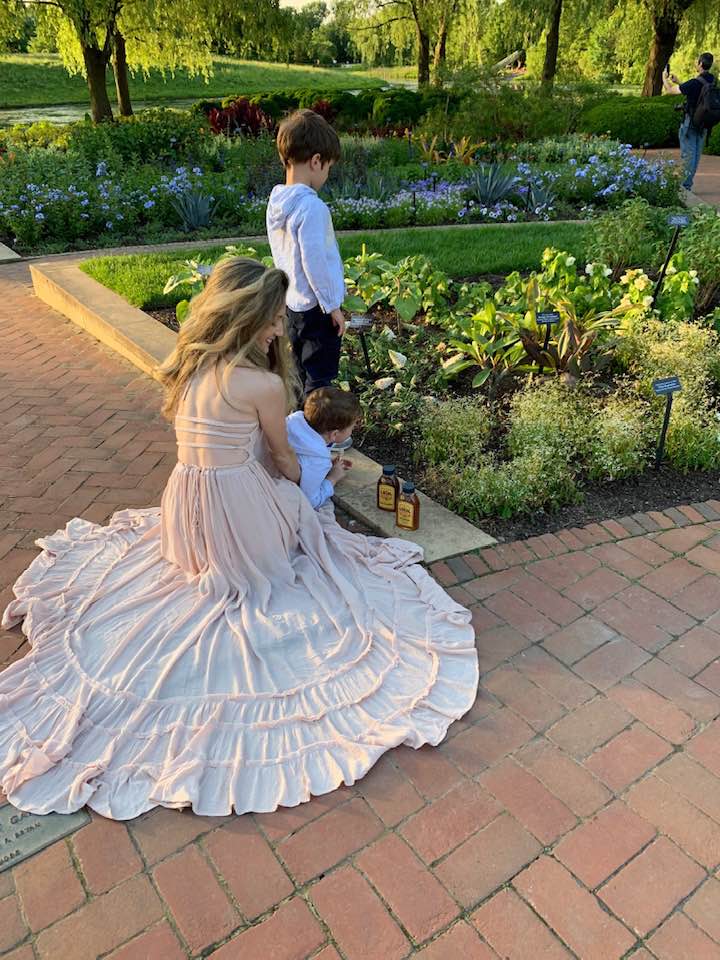
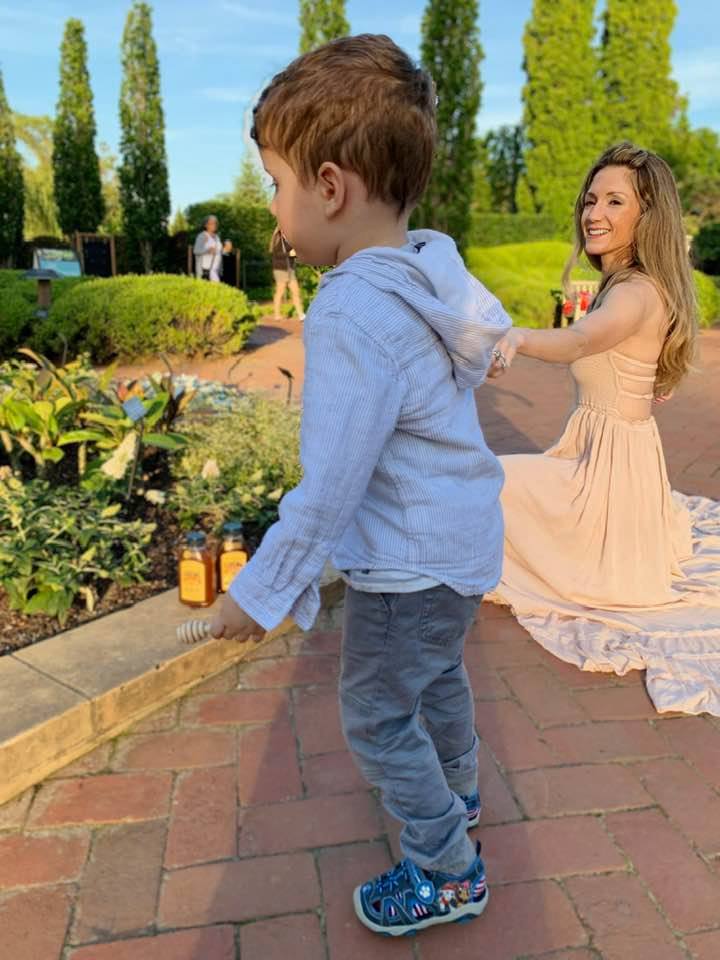
Even busy bees stop and smell the flowers. That’s exactly what the boys and I set out to do this week. In helping bees with pollination with Local Hive, we got to spend some QT with the flowers and the bees! This week was also Pollination Week and I was so excited at the chance to work with the Local Hive. They have a tremendous mission and activism around bees and our food supply. I have long admired bees, although I’m irrationally afraid of them and you can check out my mini-shrine to them here.
Before I tell you more about our excursion and the Local Hive, I want to share some stats with you. The work of bees and how they affect our lives is mind-blowing. Suddenly, all of these sayings, like “the bee’s knees” “worker bee”, and “queen bee” start to make sense. These guys are inspiring in every way and the best part is that you and I have the power to help them do their job!
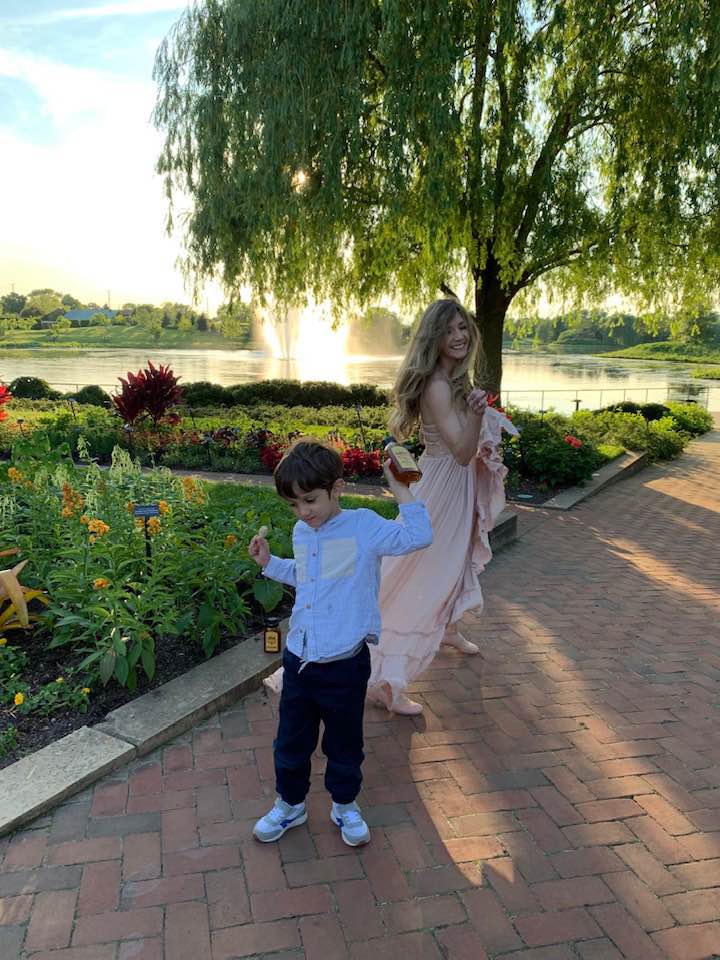
Bee Stats- why we should care about helping bees with pollination?!
- A colony of bees consists of 20,000-60,000 honey bees and one queen. Worker honey bees are female, live for about 6 weeks and do all the work.
- Honey bees must gather nectar from two million flowers to make one pound of honey.
- One bee has to fly about 90,000 miles – three times around the globe – to make one pound of honey.
- The average bee will make only 1/12th of a teaspoon of honey in its lifetime.
- A honey bee visits 50 to 100 flowers during a collection trip.
- A honey bee can fly for up to six miles, and as fast as 15 miles per hour.
- Honey bees communicate with one another by dancing. (love this one!)
- Honey’s ability to attract and retain moisture means that it has long been used as a beauty treatment. It was part of Cleopatra’s daily beauty ritual.
- Honey bees have been producing honey in the same way for 150 million years.
- The queen bee can live up to 5 years and is the only bee that lays eggs. She is the busiest in the summer months, when the hive needs to be at its maximum strength, and lays up to 2500 eggs per day. Larger than the worker bees, the male honey bees (also called drones), have no stinger and do no work. All they do is mate. (that’s pretty funny!) Source: Matter of Trust
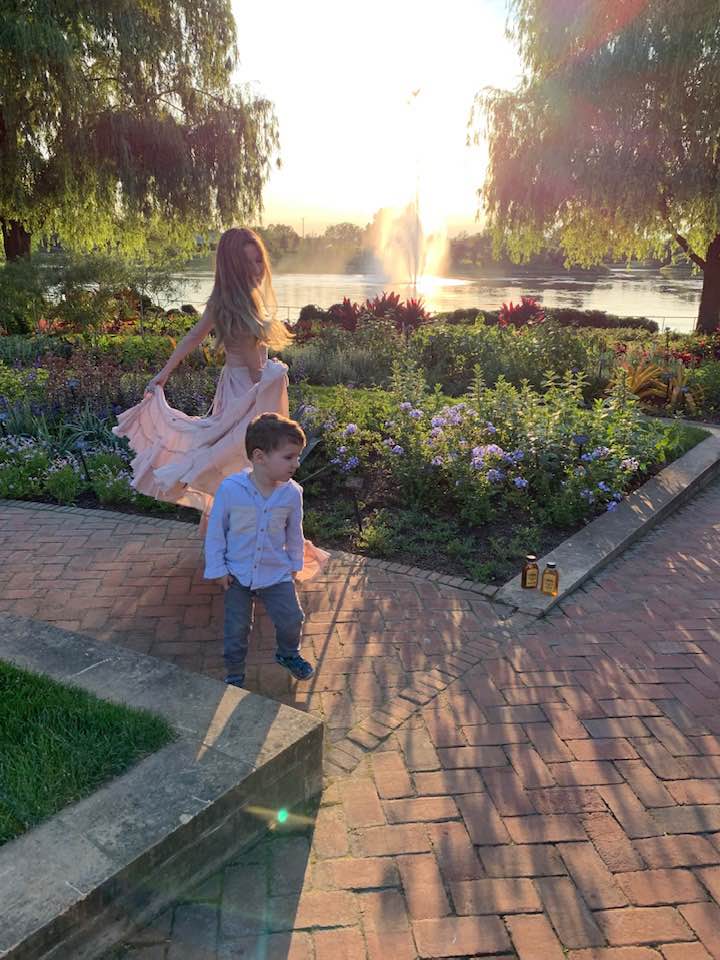
How we can all be helping bees with pollination
Bees not only make delicious honey, they play a huge role in our food supply chain. As some of the main pollinators (70%) of food crops, they help produce about a third of the food we consume daily, per Sustain.Org. Unfortunately, their colonies appear to be shrinking every year. That’s why companies, such as the Local Hive, are imperative in spearheading awareness and activism. They have an amazing section of their site that is purely educational. What I learned is that if I plant wildflower seeds, this simple action makes a huge impact to jump-start the pollination cycle!
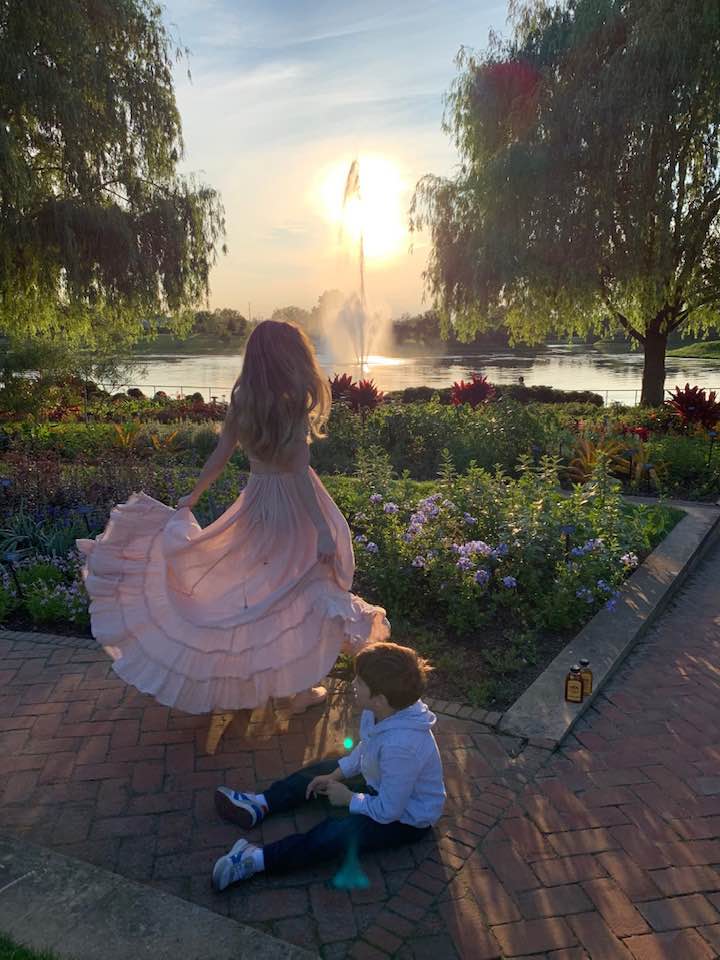
Making helping bees with pollination fun!
Since we’re such a busy family (like everyone else), I’m always looking for ways to spend more time with my kids in fun meaningful way. It was great to help them make the connection between their favorite treat and flowers! Earlier this week, we went out to Chicago Botanical Garden, a family fave, and rolled up our sleeves with the bees.
The boys were so fascinated to hear about all the work they do and how we can be helping bees with pollination. I think my older son, Matteo, was able to grasp that flowers aren’t just for “mama” on her birthday but that they have a “job”! He asked a lot of questions and we laughed so hard when he said “that sounds really hard!” after we explained the role of bees. For my little guy, Henrick, all he knows is that he love his honey and was happy to enjoy it there also!
I love being able to teach them that food doesn’t just magically appear. Good, whole, nutritious food is a miracle and so important for our health. I’m excited to plant wildflower seeds in our own backyard this weekend, and hopefully they’ll be able to make the connection.
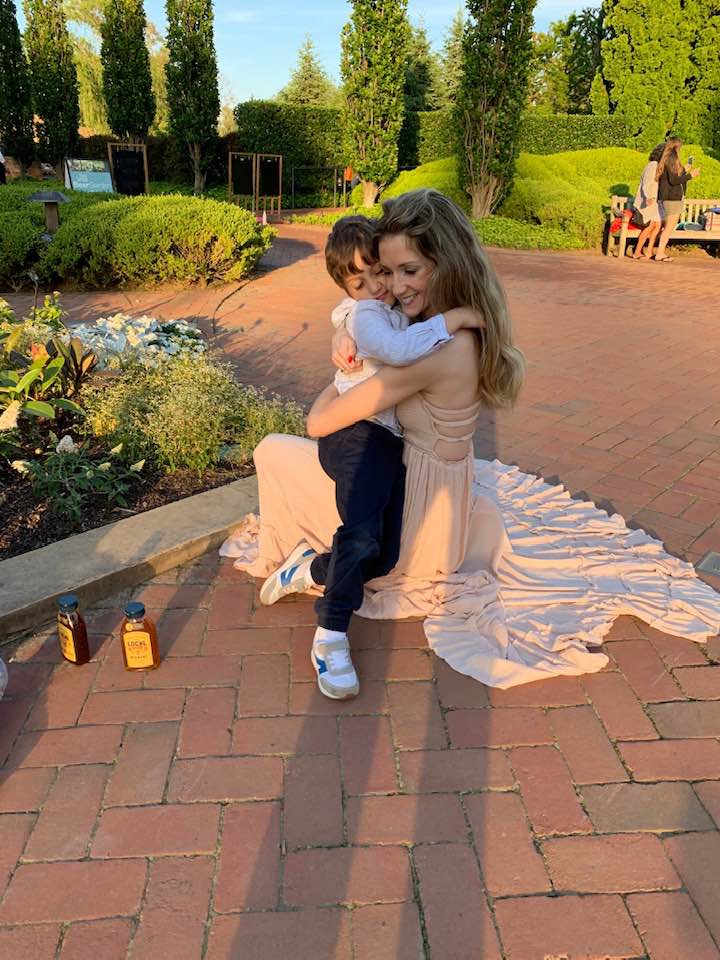
Enjoying the delicious taste!
For now, we look forward to our honey drenched yogurt and fruit in the morning. At night, we love it on vanilla ice cream and always after a spoonful of medicine, if we’re sick! We are LOVING the taste of the Midwest honey varietal with a hint of cinnamon that I’m obsessed with! I think I will also like the darker honey taste of the Washington varietal! Make sure to check out all the varieties here! This is my bookmarked, go-to post for healthy recipes you can make with honey!
I hope you join our family on Pollination Week in a loving effort to help our dearest insect friends, the one & only honey bee! To get involved and learn more about what the Local Hive is doing, check this out! Buzz me if you have questions. XO, Z
